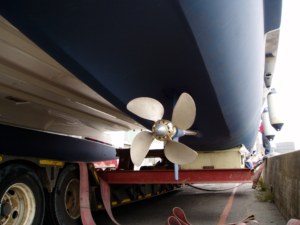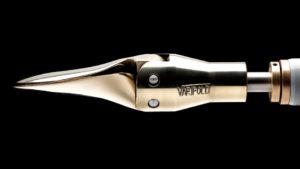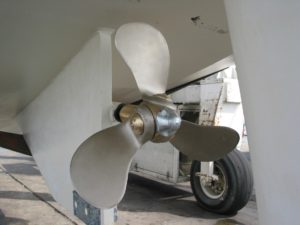Types of Sail Boat Propellers
There are four types of propeller currently available on the market for sailing boats. Gone are the days when the choice was at most between a “three fixed blades” and a “folder”. Now there are several alternatives available on the market supported by well-established companies, and they are all of interest to the cruising sailor.
Fixed Propeller
This is generally a mass production propeller par excellence, the one supplied with new production yachts mostly because of the price. This is indeed the cheapest and will provide good thrust. On the other hand fixed blades also mean greater resistance in the water when sailing so are not the most desirable option for sailing yachts.
Folding propeller
Available in two, three and now four blade. The blades close together and offer minimum possible resistance under sail. These originated primarily for the racing skipper to improve regatta performances. Some of the older designs were a significant compromise in terms of thrust and when backing down but mostly they where a means of auxiliary propulsion. Modern designs have improved dramatically, although astern performance is still a little limited, as the blades need to open against the water flow when going astern. Some of the very latest designs incorporate small blade overlaps, the rotation of the shaft uses the water pressure as well as the centrifugal force to help open the blades, especially when backing down. Three blade versions are often seen as a less expensive alternative to the feathering options. They are as good as a fixed prop under power in most cases but lack “bite” when manoeuvring. The four blade version is better for low noise and smooth operation. On larger yachts with high-powered engines there is a tendency for propeller cavitation. Particular over 100hp where cavitation manifests itself as noise and vibration, an uncomfortable idiosyncrasy in the aft cabin or owners stateroom on a luxury yacht. It is important to calculate blade loading before specifying a propeller for a heavy displacement yacht with a powerful engine.


Two, three and four blade feathering propellers (adjustable pitch propellers):
The blades, in the “sailing” position self-adjust by positioning themselves like a flag relative to the flow of water, ensuring minimum resistance. The blades have a flat shape, without helical pitch distribution or skew and can be a compromise under power but this is said to be the off set by their low-drag. They have manual adjustable pitch and the blades present the leading edge in ahead as well as astern. The pitch adjustment can help improve performance at the cruising rpm but this setting will reduce the maximum allowable engine rpm and thus overload the engine. Modern compact diesel engine manufacturers like the engines to reach the maximum rated engine rpm under load. The feathering propeller is a very good low-drag alternative for a long keel vessel with a small propeller aperture.


Controllable Variable Pitch Propeller
Automatically Variable Pitching Propeller
Available in two and three blades. This is known as the Autoprop, a unique design, which offers better performance motoring and motorsailing. The blades adjust their pitch angle automatically by sensing the forces and load characteristics acting upon them. The balancing of these opposing forces, centrifugal and hydrodynamic, produces the optimum blade angle of attack for any given engine rpm. You therefore need less rpm and consequently use less fuel thoughout the engine’s motoring range. This makes it ideal for cruising speeds under power and will be faster at any given rpm than a fixed pitch propeller. This also helps when motorsailing as the blades pitch up with the contributing aid of the sails – whereas a fixed propeller needs to be over-revved to catch up with the driving force of the sails. Like a feathering propeller the blades also lead in astern as in ahead and prop-walk is virtually eliminated due to the fine pitch setting at low speed manoeuvring. Overall this propeller is the least compromise over all the other folding and feathering types and will actually improve your motoring performance over a fixed pitch propeller. Difference in drag over other folding and feathering propellers is marginally more and probably not the answer for the racing skipper. You can still expect to gain ½ to ¾ knot under sail with the Autoprop.

